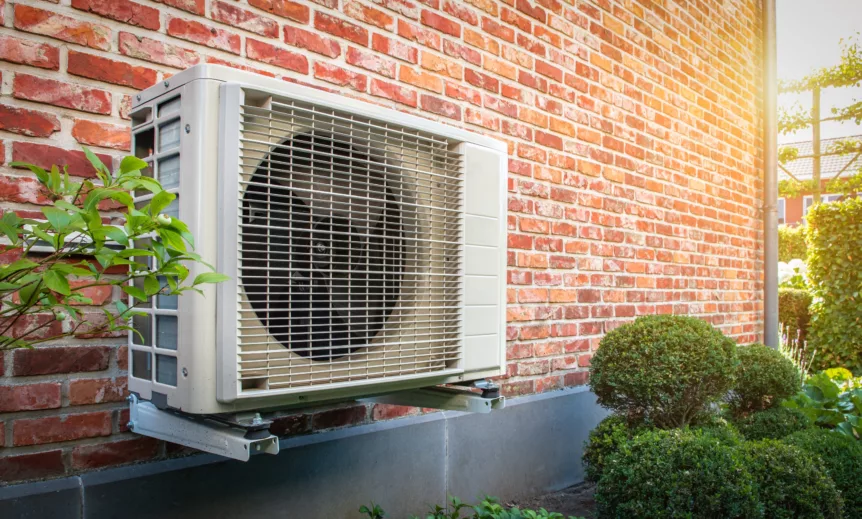Originally published in AESP’s Energy Intel Magazine – Q4 2023 Issue
“Beneficial electrification” involves transitioning customers away from energy-inefficient and harmful appliances such as gas- and propane-based HVAC, water heaters, cook stoves, and clothes dryers (and even resistance electric systems), to better, high-efficiency, solutions such as heat pump HVAC and Water heaters and induction cook stoves. While this can reduce customers’ energy use and greenhouse gas emissions, it may not necessarily reduce utility bills, since Natural Gas is typically cheaper than electricity, even after accounting for the efficiency gains. Consequently, it must be approached with thorough due diligence to ensure cost reductions. Additionally, equitable implementation requires leveraging creative approaches to target underserved populations such as multifamily affordable housing (MFAH) or Tribes.
Multifamily (MF) properties provide approx. 30% of the housing stock in the U.S., but are historically categorized as “hard to serve,” especially the subsidized or unsubsidized affordable properties (MFAH).[1] Thus, the MF/AH market constitutes a huge, missed opportunity for energy savings and electrification. Historically, 85% of MF residents are low- and moderate-income (LMI) and currently, MF buildings provide housing for over 19 million low-income (LI) households nationally.[2] Many MF properties, especially MFAH, are 50+ years old with deteriorating mechanical systems, building shells, and plagued by health and safety hazards. These conditions also inflate utility bills, which are the largest variable operating expense for MFAH[3] and for the LMI residents, adds to their high energy burden, making it harder for them to pay for other necessities such as food, medicines, transportation (to and from work), etc. Traditional barriers to serving MF/AH have included:
- property owners’ lack of resources such as time, funds, and/or in-house expertise;
- property owners’ ignorance of and/or aversion to clean energy programs (often, their aversion is well-founded since, like any enterprise, the clean energy transition suffers bad actors and price gougers that target vulnerable communities);
- the inherent diversity in MF building stock (size, configuration, financing/ownership models, age);
- the ‘split incentive’ issue, i.e., owners pay for the upgrades and believe the tenants benefit from the utility bill savings; and
- a contractor base that is largely unfamiliar with either MF properties, high-efficiency technologies, or both.
Compounding the MF/AH specific barriers, fully delivering on beneficial electrification requires a holistic set of upgrades that ensure utility costs decrease, and not increase! For example, in a gas-to-electric HVAC and water heater conversion, the upgrades to heat pumps should be delivered in concert with PV solar and other energy efficiency measures. An increase in bills is not what the LMI customer wants! This approach is crucial for scaling beneficial electrification for MF and MFAH.
Utilities and their service providers have a unique role to play in whether consumers embrace these technologies, and a few programs around the U.S. provide successful templates for others to follow, such as the Rocky Mountain Power (RMP) custom MF DSM program in Utah. Launched in 2018, this program covers the entire MF market and focuses on holistic, deep energy savings, paying incentives tied directly to energy savings and offering greater incentives for heat pump installs. Affordable properties get an even higher incentive. The Program leverages a one-stop-shop approach that includes free design assistance and energy modeling services, design-build services, upfront rebates, a single point of contact for the customer, and more. With the right design, the program has grown almost 500% since its launch. It has installed approx. 8,000 heat pumps in the last two years, after receiving state approval to incentivize fuel-switching from natural gas to electric systems.
It should be noted that the emphasis on beneficial electrification has never been greater. A group of 25 state governors and the Biden administration recently announced a pledge to quadruple the number of heat pumps in U.S. homes by 2030, from 4.7 million to 20 million.[4] In 2022, U.S. residential heat pump sales passed gas furnaces for the first time.[5] The International Energy Agency has described heat pumps as “the central technology in the global transition to secure and sustainable heating,” and noted that particular attention needs to be paid to increasing heat pump deployment in MF and commercial buildings.[6] Beneficial electrification has also never been more viable, given (1) the increasing availability and decreasing costs of solar PV, and (2) the influx of federal funding for weatherization and health and safety solutions. The Inflation Reduction Act (IRA) and Bipartisan Infrastructure Law (BIL) offer a huge opportunity to coordinate funds, resources, and expertise from various programs to deliver customer-focused solutions that incorporate PV solar, weatherization, and heat pump technologies. By leveraging these opportunities, States and utilities can drive projects that support greater demand management, customer cost savings, resilience, and pollution reduction. However, successfully doing so will require several key actions:
- Leverage expertise from national MF/AH players, which is key to successful execution.
- Engage with local stakeholders developing programs for expending the BIL/IRA funds. Coordination will ensure that programs do not become redundant, or worse, in competition each other.
- Use national best practices for specific target markets, e.g., a single-family program design will not work for MFAH. Readers can follow this link to learn more: https://lp.icastusa.org/programs-for-mfa-white-paper/
The good news is that there is plenty of research and data to show the path toward a successful MF/AH program design. Many papers and references showcase national best practices for program designs for MFAH. The potential is great, and the time to lean into it is right now.
 Ravi Malhotra is the President and Founder of ICAST (International Center for Appropriate and Sustainable Technology), a national 501c3 nonprofit with a 22-year history of scaling clean energy solutions in multifamily affordable housing. Mr. Malhotra has 30 years of experience as a social entrepreneur and engineer. He holds a bachelor’s degree in engineering from the Indian Institute of Technology‐Delhi, India, and master’s degrees in Engineering and Business Administration from UT-Austin and a Certificate in Renewable Energy Deployment from Yale University.
Ravi Malhotra is the President and Founder of ICAST (International Center for Appropriate and Sustainable Technology), a national 501c3 nonprofit with a 22-year history of scaling clean energy solutions in multifamily affordable housing. Mr. Malhotra has 30 years of experience as a social entrepreneur and engineer. He holds a bachelor’s degree in engineering from the Indian Institute of Technology‐Delhi, India, and master’s degrees in Engineering and Business Administration from UT-Austin and a Certificate in Renewable Energy Deployment from Yale University.
[1] “Explore Census Data.” Data.census.gov, data.census.gov/table/ACSDP1Y2019.DP04?q=dp04. Accessed 23 Nov. 2023.
[2] Analysis of ACS 2020 data from the LEAD tool. Data available at https://www.energy.gov/scep/slsc/lead-tool.
[3] “National Housing Trust Stabilizes Utility Costs by Installing Solar Systems | Better Buildings Initiative.” Energy.gov, 2023, betterbuildingssolutioncenter.energy.gov/implementation-models/national-housing-trust-stabilizes-utility-costs-installing-solar-systems. Accessed 14 Dec. 2023.
[4] “U.S. Climate Alliance Announces New Commitments to Decarbonize Buildings across America, Quadruple Heat Pump Installations by 2030 | U.S. Climate Alliance.” Usclimatealliance.org, usclimatealliance.org/press-releases/decarbonizing-americas-buildings-sep-2023/. Accessed 14 Dec. 2023.
[5]“US Residential Heat Pump Sales Pass Gas Furnaces for First Time as Interest in Efficiency Tech Surges: IEA.” Utility Dive, www.utilitydive.com/news/heat-pump-sales-topped-gas-furnaces-United-States/652277/. Accessed 14 Dec. 2023.
[6] “Executive Summary – the Future of Heat Pumps – Analysis.” IEA, www.iea.org/reports/the-future-of-heat-pumps/executive-summary.

